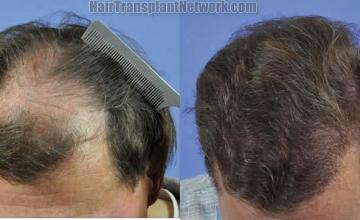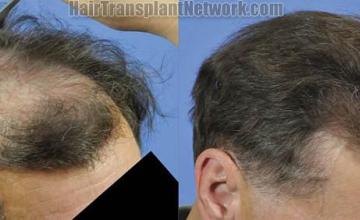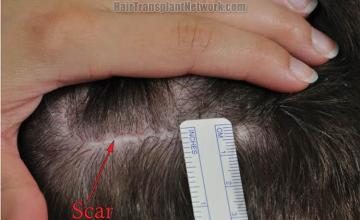Procedure detail
This hair restoration patient is a 69 year old gentleman who two years ago underwent a 3129 graft hair transplant to the central aspect of his scalp. Interestingly, he had a nice central forelock/tuft of hair, but the lateral frontal aspect of the hairline was sparse at best. He had a decent amount of hair in the lateral aspect of the scalp (above his ears), which he used the hair in that area to cover and comb over the central thinning.
His hair characteristics were thinner for his age. His hair color was a mix of brown to grey, which added to a contrast differential to his skin. He did have a nice wave to his natural hair in the donor area. His skin laxity was average as well.
His main goal was to cover the central balding areas adding a natural layer of fullness and hair to the central scalp. Our plan was to transplant into all the areas in the central scalp that were devoid of hair and blend into the thinning areas this way there would not be a demarcation between his natural hair and the transplanted hair.
The strip size was 25.5 x 1.5 cm with a trichophytic skin excision and double-layered closure technique.
The final graft count was the following:
1 hair grafts: 550
2 hair grafts: 1951
3 hair grafts: 529
4 hair grafts: 99
He is now 2 years following surgery and very happy with the results. Unfortunately, the preoperative photos were not standardized as I do now with all photos, but they give a nice representation of his initial hair loss. I choose the post op photos that were closely matched to the preoperative photos to give the best comparison. He filled in the central scalp very well, and the wavy structure to his hair gives adds to the density of the hair (which helps make up for the thin hair he has).
Bald class

Norwood class 4
Characterized by further frontal hair loss and enlargement of vertex, but there is still a solid band of hair across the top (mid-scalp) separating front and vertex.




